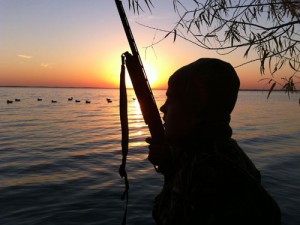The recent series of cold fronts that passed behind the remnants of Hurricane Isaac continued to fuel the teal migration in Central and Mississippi flyways. At this time teal are present from the northern portions of the flyway to the gulf coast. While precipitation has increased in many areas of the nation, a study of the current drought monitor map (link below and right) reveals the grim reality faced by todays waterfowl hunters.
Hello folks, and, as always, welcome to Waterfowler.com.
Reports from the northern states during the resident goose seasons foreshadowed many of the problems waterfowl hunters will face this season. As an abundance of farmers prepare to mow and disc under fields for crop insurance purposes, thousands of acres across the corn-belt will be rendered useless to waterfowl hunters as they become categorized as baited fields.
Waterfowler.com encourages our readers to exercise extreme caution and know the federal regulations when hunting in areas where crops have been manipulated for insurance purposes – as this is not considered “Standard Agricultural Practice.”
As we field calls in our offices on this issue, it has become apparent that many hunters do not understand the regulations and could put themselves at risk of fines and penalties this season as a result of this confusion.
The biggest misconception, that seems to exist with waterfowl hunters is you that can legally hunt one of these fields 10-days after it has been cut – THIS IS INCORRECT! You can only hunt a field that has been manipulated 10-DAYS after ALL GRAIN has been REMOVED.
Let us repeat that, “10-days after ALL grain has been REMOVED.”
The Illinois DNR has issued the following statement to raise hunter awareness on the topic:
Questions regarding hunting crop fields mowed or tilled due to drought insurance claims;
1. If a standing grain crop is 100% void of any ears (corn field produced no ears), can the field be mowed then hunted? Yes, as long as there is no grain present in the field. A field that produces NO ears of corn will probably be a rare occurrence.
2. If a standing grain crop has any amount of grain present after it is mowed, can it be hunted? No, it is a “baited area” until 10 days after the complete removal of the grain.
3. Can a standing crop that was mowed be disked and made legal for hunting? The field can only be hunted after all exposed grain has been completely removed or buried for a period of 10 days. Hunters should keep in mind that if a dry field is tilled to the extent that no grain is visibly present, strong winds or the first rain is likely to wash off some covered grain, thus still making it a baited situation.
4. Why can a person not hunt over a mowed area? Under federal baiting regulations, mowing or tilling of a standing crop is not a “normal agricultural planting, harvesting, post-harvest manipulation, or normal soil stabilization practice” as determined by the U.S. Department of Agriculture’s Cooperative Extension Service.
Waterfowler encourages our members to take the time and review federal baiting regulations at the link below and understand the laws before heading to the field.
With the general waterfowl season about to begin in many states, we encourage our readers to post their hunting and scouting reports as often as possible to assist us in our annual migration tracking.
Until next week, begin planning your youth waterfowl hunts today, the future of our sport depends on new recruits.






